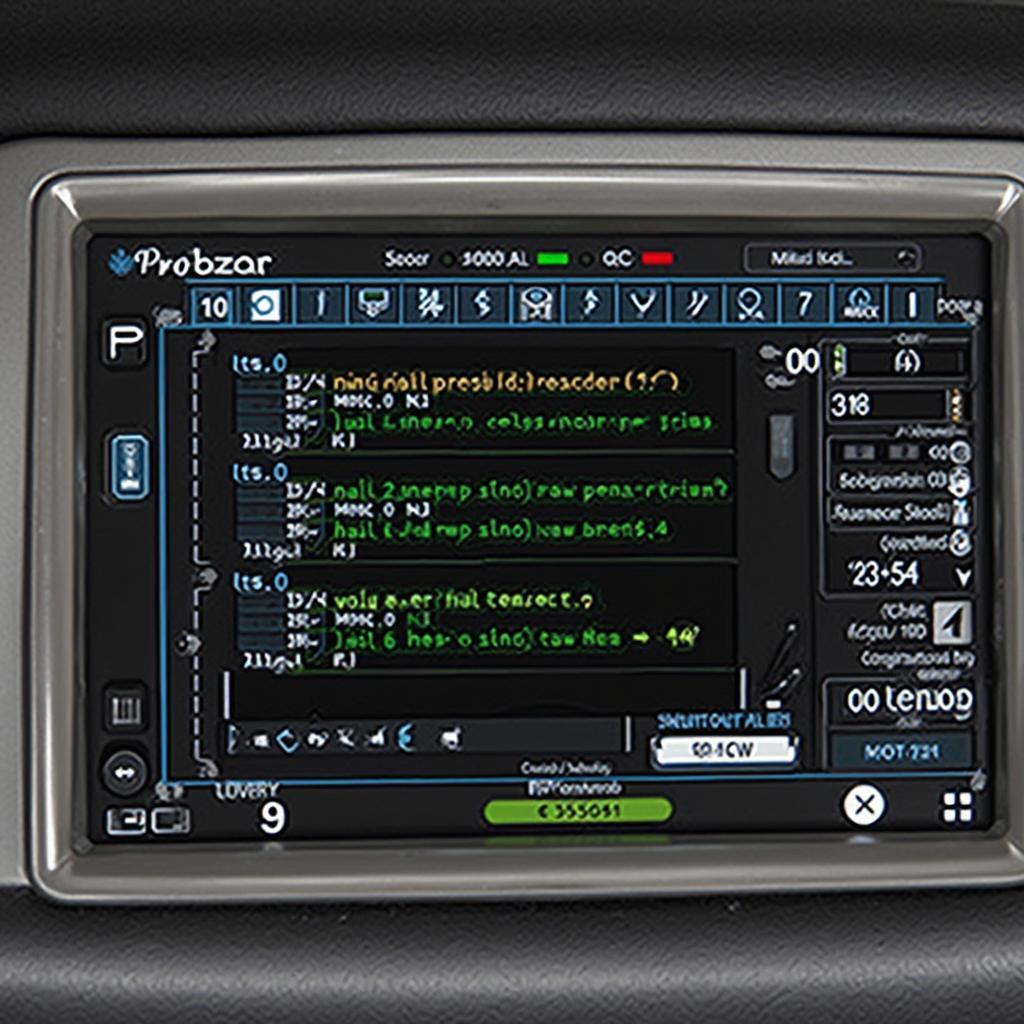Fuel system status OBD2 readings provide a crucial window into your vehicle’s engine performance and efficiency. Understanding these readings empowers you to diagnose potential issues, improve fuel economy, and keep your car running smoothly. Whether you’re a seasoned mechanic or a car enthusiast, this guide will delve into the intricacies of fuel system status OBD2, explaining its importance and how to interpret the data it provides.
Checking your vehicle’s obd2 fuel system status is a crucial part of maintaining optimal engine performance. Right after startup, your engine’s fuel system undergoes a series of checks and adjustments to ensure everything is running efficiently. This information, accessible through your OBD2 scanner, can be invaluable for diagnosing problems and understanding how your engine is performing. By learning how to interpret fuel system status data, you can take proactive steps to maintain your vehicle’s health and prevent costly repairs down the road.
Decoding the Fuel System Status OBD2 Data
The OBD2 system monitors various parameters within the fuel system, including fuel pressure, air-fuel ratio, and fuel trim. These parameters offer insights into the engine’s combustion process and can help pinpoint issues such as a faulty oxygen sensor, a leaking fuel injector, or a clogged fuel filter. Understanding these readings is key to effective diagnostics. For instance, a consistently lean air-fuel ratio could indicate a vacuum leak, while a rich mixture might suggest a problem with the fuel injectors.
Fuel trim, a critical component of the fuel system status, tells you how much the engine control module (ECM) is adjusting the fuel mixture to achieve the ideal air-fuel ratio. Short-term fuel trim reflects immediate adjustments, while long-term fuel trim represents more permanent changes. Significant deviations in fuel trim, especially in the long-term, can signal underlying problems that require attention. You might want to consider adjusting your set long term fuel trim torque obd2 app if necessary.
What does fuel system status mean in OBD2?
Fuel system status in OBD2 refers to the real-time information provided by the vehicle’s onboard computer about the various components and operations of the fuel system. This information, accessible via an OBD2 scanner, offers a snapshot of how the engine is managing fuel delivery and combustion.
Why is fuel system status important?
Monitoring fuel system status is essential for maintaining optimal engine performance, fuel efficiency, and emissions control. By understanding these readings, you can identify potential problems early on and prevent costly repairs.
“Understanding your car’s fuel system status is like having a direct line to your engine’s health,” says automotive expert, Dr. Emily Carter, Ph.D., Mechanical Engineering. “It’s a powerful tool for both preventative maintenance and troubleshooting.”
Common Fuel System Status OBD2 Issues and Troubleshooting
Several common issues can be diagnosed through fuel system status OBD2 readings. These include:
- Lean or Rich Air-Fuel Ratio: This can be caused by vacuum leaks, faulty oxygen sensors, or malfunctioning fuel injectors.
- High or Low Fuel Pressure: Problems with the fuel pump, fuel filter, or fuel pressure regulator can lead to pressure fluctuations.
- Incorrect Fuel Trim Values: Significant deviations in fuel trim can indicate issues with sensors, injectors, or other fuel system components.
If you notice unusual readings, consulting your vehicle’s repair manual or a qualified mechanic is recommended, especially if you’re unsure how to operate your specific veepeak obdcheck vp39 obd2 owners mnual. This ensures accurate diagnosis and appropriate repairs.
Conclusion
Fuel system status OBD2 is a valuable tool for understanding your vehicle’s engine performance and identifying potential problems. By learning to interpret the data, you can take proactive steps to maintain your car’s health and ensure optimal fuel efficiency. Regular checks of your fuel system status, combined with proper maintenance, will help keep your car running smoothly for years to come. Don’t underestimate the power of understanding your obd2 meaning related to your fuel system.
FAQs
- What is the ideal fuel system status OBD2 reading? There isn’t a single “ideal” reading. Optimal values depend on the specific make and model of your vehicle. Consult your vehicle’s manual for specific parameters.
- How often should I check my fuel system status? Regular checks, such as monthly or before long trips, are recommended.
- Can I fix fuel system problems myself? While some minor issues can be addressed by DIYers, more complex problems require professional attention.
- What tools do I need to check fuel system status? An OBD2 scanner, like the panlong bluetooth obd2 obdii car diagnostic scanner, is necessary to access fuel system data.
- What does it mean if my fuel trim is high? High fuel trim often suggests a lean condition, where the engine is not receiving enough fuel.
- What is the difference between short-term and long-term fuel trim? Short-term fuel trim reflects immediate adjustments, while long-term fuel trim represents more permanent adaptations to the fuel mixture.
- Can a bad oxygen sensor affect fuel system status? Yes, a faulty oxygen sensor can provide inaccurate readings, leading to incorrect fuel mixture adjustments and affecting fuel system status.
Need more help? Please contact us via WhatsApp: +1(641)206-8880, Email: [email protected] or visit our office at 789 Elm Street, San Francisco, CA 94102, USA. Our customer service team is available 24/7.


